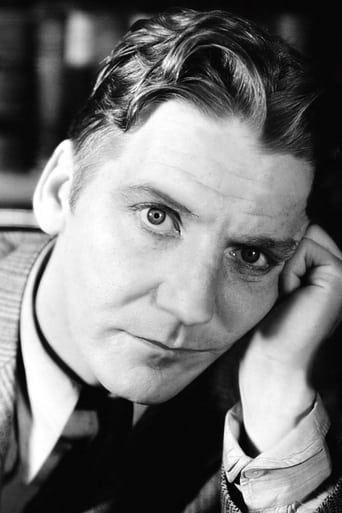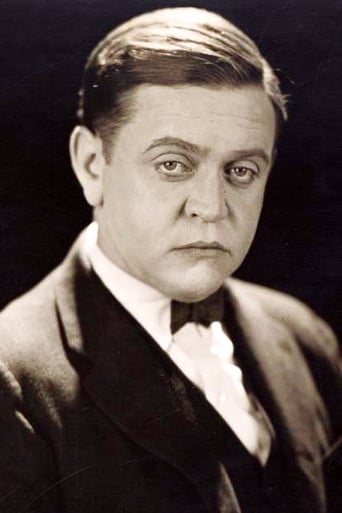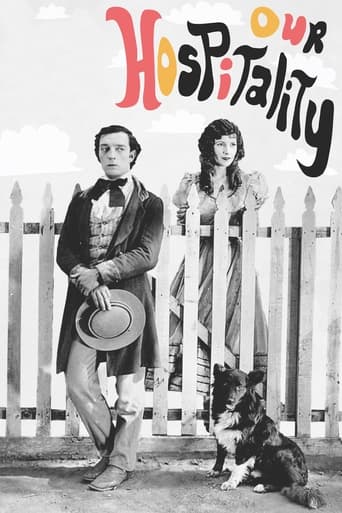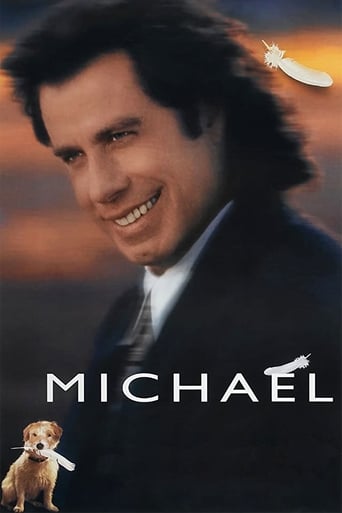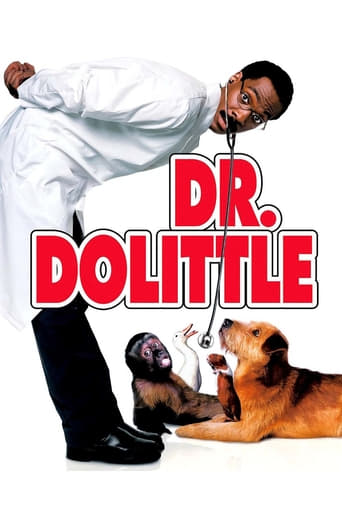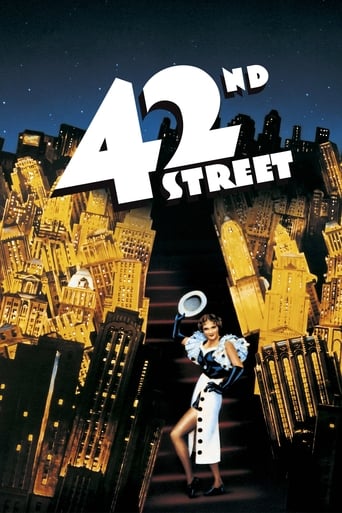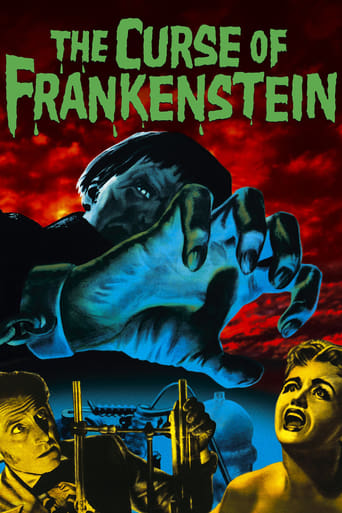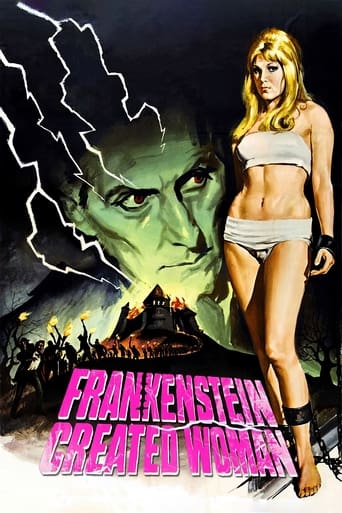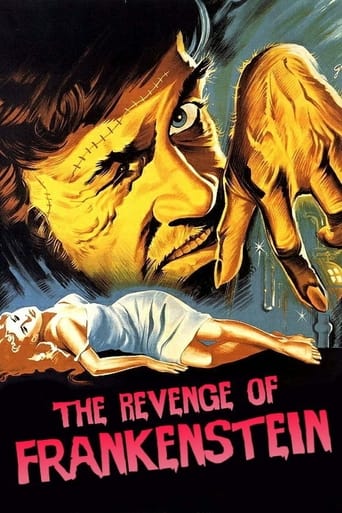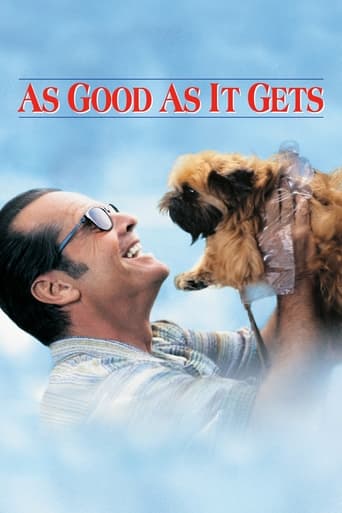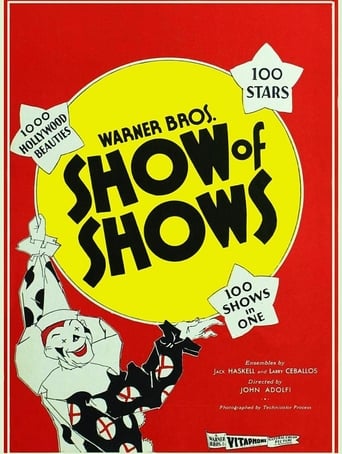
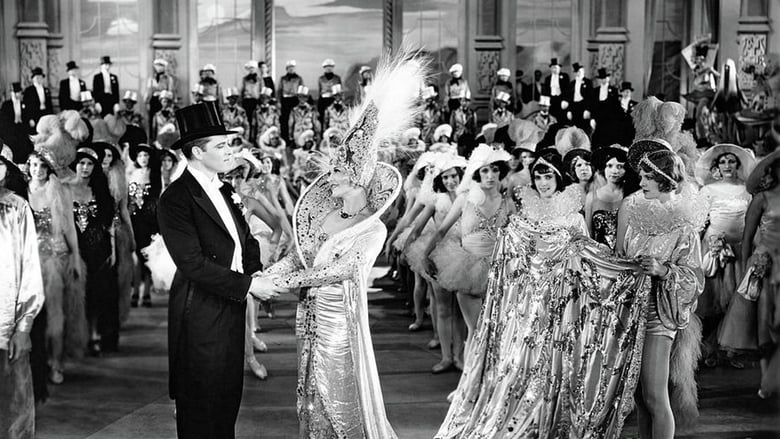
Show of Shows (1929)
Now hear this. The studio that gave the cinema its voice offered 1929 audiences a chance to see and hear multiple silent-screen favorites for the first time in a gaudy, grandiose music-comedy-novelty revue that also included Talkie stars, Broadway luminaries and of course, Rin-Tin-Tin. Frank Fay hosts a jamboree that, among its 70+ stars, features bicyclers, boxing champ Georges Carpentier, chorines in terpsichore kickery, sister acts, Myrna Loy in two-strip Technicolor as an exotic Far East beauty, John Barrymore in a Shakespearean soliloquy (adding an on-screen voice to his legendary profile for the first time) and Winnie Lightner famously warbling the joys of Singing in the Bathtub. Watch, rinse, repeat!
Watch Trailer
Cast


Similar titles
Reviews
The early all star musicals were designed to show audiences that even the most dramatic of stars could sparkle and captivate with their singing and dancing talent and also was a way to introduce new talent to an unknowing public ("if you like Irene Bordoni's song in "Show of Shows", you will just love her in her new movie "Paris"). They also served as screen tests where silent favourites were thrust in front of the cameras, often with no guidance or help (Clara Bow, who was a real hit in "Paramount on Parade" had to arrange her own hair), then struggled to entertain or wisecrack. Every studio had one in the pipeline, even lowly little Pathe, but they were the first type of musicals to find disfavour with the public. With the success of "The Hollywood Revue of 1929" Warner Bros. decided it, too, must have an all star revue but of the initial lineup only John Barrymore ended up in the movie. Al Jolson was a conspicuous no show, having demanded too much money (besides his last movie "Say It With Songs" was a huge flop). Master of Ceremonies was Frank Fay (at the time married to Barbara Stanwyck) a huge name in vaudeville but in movies his arrogance shone through. There is a running gag about him trying to convince the studio that he can sing - and three quarters of the way through he gets his chance but he has now picked up a side kick in Sid Silvers who does get to do an imitation of Al Jolson and a really awful song about bad breath (I'm not joking) called "If Your Best Friend Won't Tell You".Why, in my opinion, this revue fell flat, as opposed to "Paramount on Parade". Paramount knew the value of it's stars and each of it's numbers had the focus directed on one person (Clara Bow, Helen Kane, Nancy Carroll). "Show of Shows" seemed just a jumble of sketches designed to put as many of it's stars in as the stage would allow. That's why my favourite was Winnie Lightner. She had been a huge hit in "Gold Diggers of Broadway" and at the time probably seemed Warner's best bet for stardom (of course musicals were never going to go out of fashion were they?). She belted her way through "Pingo Pongo" and whether you liked that style or not she carried you through this zany song about cannibals, she looked like she was enjoying herself and actually loved to sing. She was back for another number, a funny parody of "Singin' in the Rain" called "Singin' in the Bathtub", performed in an over-sized bathroom with a male chorus dressed in old fashioned women's bathers. John Barrymore was also a standout and gave audiences a thrill with his Duke of Gloucester soliloquy from "Henry VI" and also a chance to see "the greatest Hamlet of his generation".A most bizarre opening - a nobleman is beheaded while a peasant shouts "On With the Show of Shows" - there follows an amazing precision military formation dance headed by Monte Blue. Next is the amusing "What Became of the Flora Dora Boys" (Myrna Loy, Sally O'Neil are among the girls , the boys are old comedians including Ben Turpin) which would have you believe that while the girls stayed young and beautiful, the boys hit hard times. There was a pirate number where Ted Lewis jazzed the blues away (was he really a popular band leader !!!) Richard Barthelemess introduced "Sisters" in which pairs of famous sisters (there were a few ring ins including Harriette Lake, soon to be Ann Sothern)did little dances in national costumes. I thought the problem with these numbers was even though the stars were introduced there was no individualizing - and it was often hard to pick out who was who. Just when you despaired, along came Rin Tin Tin who introduced "Li Po Li". It is the only Technicolor segment that has survived and it was dazzling - the turquoises, golds and reds were so sharp and striking. Myrna Loy is the Oriental dancing girl and Nick Lucas is the singer, there is a gigantic genie and chorus girls pop out of huge jars. It is all kitsch but wonderful.Irene Bordoni was just a bit too "different" - she sang sensuously "Just an Hour With You" but she was photographed too unflatteringly. Bea Lillie, to me, looked as though she could have been witty and funny in a modern way, was only given a few lines. Another skit in the "different" category - former middleweight fighter Georges Carpentier puts chorus girls through their exercising paces, finishing up climbing ladders where they do their formations on wall niches. The heavily promoted song of the show is "Lady Luck" and the finale, while long, is spectacular. Girls are revealed as human chandeliers as Alexander Gray tries to give the song ("don't give my hopes the razz") a touch of class. Then there come out every conceivable variety act - the floppy girl, the boy who can somersault one way and land the other and beautiful Armida who runs down the steps for a cute hip swinging dance."The Advent of a New Event in Pictures" was the slogan Warners used and at $800,000 it was their most expensive film (excepting "Noah's Ark"). It had everything, even a bathtub, but originality and proved that there was no place for revues as films it they didn't have style and class.
It's a mixed bag of songs, sketches, dramatic skits and gags for this early sound review. Warner Brothers went out of their way to try and out-do MGM's "Hollywood Revue", and in some aspects, they did, skewering their friendly rival's all-star early sound musical by giving it a good-hearted goose. This is an important look at Hollywood's transition from the silent era to sound, and practically every contract player takes part. The comedy skits seem extremely dated, and the photography can be a bit static, but overall, it's fun.While "Hollywood Revue" took the balcony sequence from "Romeo and Juliet", "Show of Shows" gave John Barrymore's soliloquy from "Richard III" with lavish results. A musical number entitled "Singin' in the Bathtub" takes Broadway's Winnie Lightner and gets a dig in at "Singin' in the Rain" from MGM with her hysterical delivery of the lyric, "Never Take a Shower. It's an awful pain. Singin' in the shower's like singin' in the Rain!". The over-sized bathtub and hysterically clad chorus is a sight to behold.A lavish final makes up for some of the precision numbers (marching chorus girls in a drill routine is really static), but the Myrna Loy number, "Nip-O-Li" will raise eyebrows with its stereotyping of the Asian culture. At least it gets two-strip Technicolor photography to give its audience a "wow!" moment. If you can go into this with a view of Hollywood history, you can get past the slow points, dated comedy and often offensive stereotypes.
It is very hard to rate this film. As entertainment value for 21st century viewers, it fails miserably. However, for the student of early sound films and history, it is a jewel. "Show of Shows" was a revue filmed to compete with MGM's successful "Hollywood Revue of 1929", which still survives intact complete with its Technicolor scenes.The purpose of the all-star revue was to showcase a particular studio's silent stars in speaking roles, and show that they could make the transition. However, Warner Bros. seems to have forgotten this and employs many acts and stars that they didn't even have under long-term contract such as Ben Turpin, Lloyd Hamilton, Beatrice Lillie, and even a marching band. Meanwhile, their biggest talent - Al Jolson - is noticeably absent. Even at a high salary he could not be compelled to join in. Almost every act is overly long and the film plays like a dozen or so Vitaphone shorts strung together with no continuity. The finale is also overly long, but it is really enjoyable with all of its dance numbers.The highlights of the film are two numbers from Winnie Lightner - "Pingo Pongo" and "Singin in the Bathtub", a couple of numbers with Nick Lucas, John Barrymore performing Shakespeare, and the Chinese Fantasy "Li Po Li" with Nick Lucas and Myrna Loy. This last number is the only part of the film that survives in Technicolor, and it really is quite attractive. Reasonably enough, the players in these good acts were long-term Warner Bros. stars so perhaps the director knew how to play to their strengths since he was familiar with them.This film acts as a snapshot at an odd point in film history - the year 1929, which was the bridge year between two eras - the silent and sound eras, and the roaring 20's and the Great Depression. Just two years later this same film would have had an entirely different cast, as Warner Bros. would abandon its silent era stars and the stars they hired just to produce the early musicals in favor of those stars that gave Warner Bros. its distinctive urban look and feel - James Cagney, Joan Blondell, Edward G. Robinson, and others.
"Show of Shows" is one of the worst films made in the early talkie period and the worst of all the great reviews. Warner Brothers tried to one-up all the other studios by making an all-Technicolor review (although "King of Jazz" was all color) and making it longer than any of the others. Their plans were thwarted when 15% of the movie had to be filmed in black and white due to lack of Technicolor cameras. Winnie Lightner's two numbers save the film from total oblivion, but otherwise beware. This supposed musical comedy opens with a French revolution scene. A poor soul is dragged up to the guillotine and his head is lopped off. Someone in the background then shouts, "Now on with the Show Of Shows!" It goes downhill from there.


